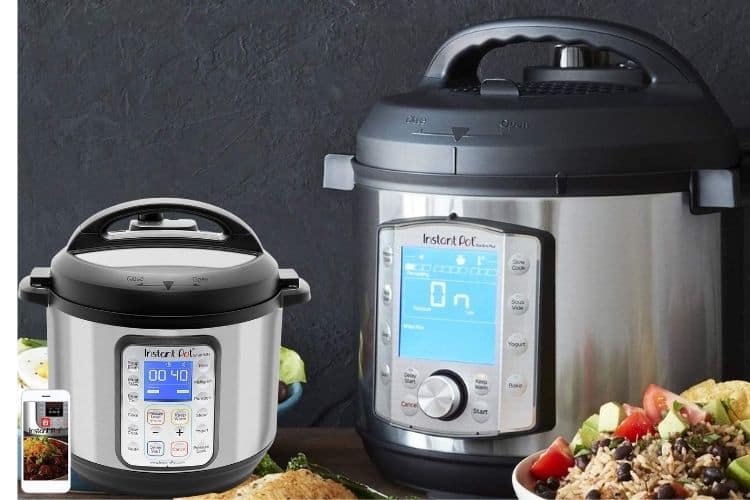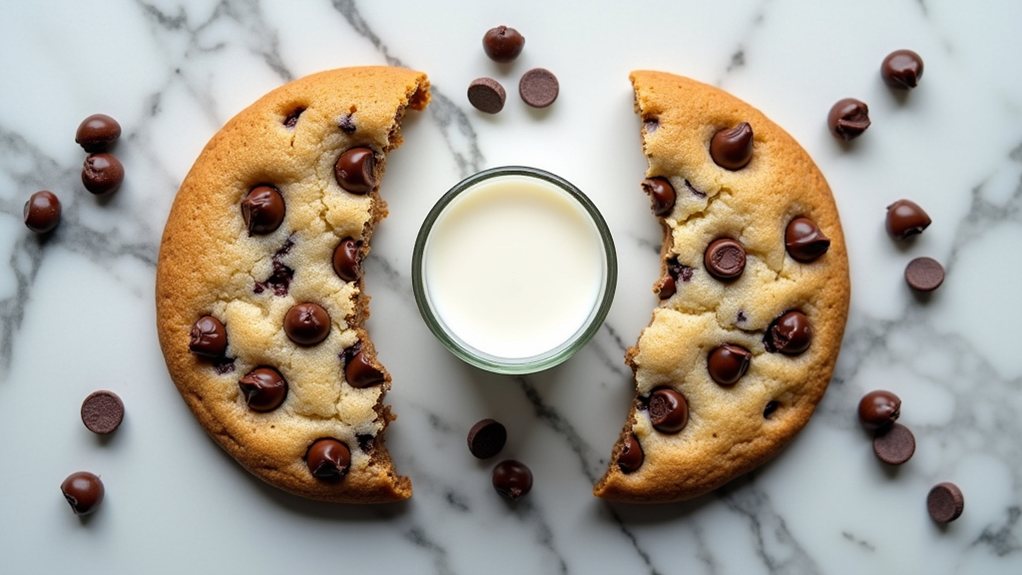Cooks and chefs have several different knives in their kitchen area.
These all have various sizes, shapes, and weights that help them carry out specific purposes.
Chef’s knives are versatile pieces of equipment, allowing you to slice, dice, and chop with ease.
However, their wider blade may be ideal when dicing vegetables, but it fails to slice fish or meat as well.
Santoku knives, on the other hand, are designed well for this purpose.
These are lighter, taller, and sharper, helping you slice smaller ingredients in a precise, controlled manner.
You’ll learn more about chef’s knives and Santoku knives in this post, including the differences between the two, their ideal uses, and how to care for each knife (see also ‘What Knives Does Guy Fieri Use?‘).
Chef’s Knives Vs Santoku Knives
Both Santoku knives and chef’s knives are general-purpose instruments. They can be used for several cutting tasks, including dicing, slicing, and mincing.
As they are so versatile, they are both common sights seen in home and professional kitchens.
Both types of knives are made from a variety of materials, like metal or ceramic.
Several professional chefs choose steel knives as they are strong and resist corrosion well.
However, one key difference between the two is that Santoku blades, and other Japanese blades, are made with thinner, tougher steel.
This helps chefs carry out precision kitchen tasks easily.
The main differences between chef’s knives and Santoku knives concern the shape of the blade and where they came from.
Amazon Best Selling Best Selling Santoku Knife
Santoku Knife Characteristics
- First made in Japan
- Broader sheepsfoot blade without a tip
- Thinner blade compared to chef’s knives enables precise slicing
- Can be double or single-sided bevel
- Tends to have no bolster
- Even weight distribution
- Lighter weight
- Some have divots on the blade that prevent food from adhering to the metal
- 5 inches to 7.9 inches long
Chef’s Knife Characteristics
- First made in France and Germany
- Large curved blade with a tip
- Available in serrated options
- Generally only available in double bevel
- Equipped with bolster
- Heavier weight
- Some may have a Granton edge
- Varies from 6 inches to 12 inches long
Importance Of Blade Shape
Chef’s knives have specially designed blade tips that make the blade move in a rocking motion as the chef finishes their cut.
Santoku knives don’t have a tip, which enables the chef to cut in one downward motion.
Several chefs do prefer the rocking motion of a chef’s knife, but Santoku knives allow you to slice quickly and efficiently.
Santoku knives and chef’s knives also have different bevels. Expert chefs tend to use Santoku knives that are single bevel.
You can sharpen the blade at a smaller angle to make it sharper.
For instance, double-bevel chef’s knives can be sharpened at 30°, but Santoku blades can be sharpened at 15° on a single side, enabling a sharper, efficient cut.
This is ideal when you want to slice extremely thin slices, a prominent feature of several Japanese dishes.
Santoku Knife Purposes

The term ‘Santoku’ means ‘three virtues’, also known as three uses: mincing, dicing, and chopping.
Santoku knives take care of all of these tasks well, but they aren’t the best when slicing bread, cutting big meat bones, or during precise jobs, like peeling.
Santoku knives work very well when making thin food slices, which makes several dishes look better overall.
Santoku knives are best used to:
- Cut meat
- Make fine slices, like seafood or vegetables
- Scoop items off of cutting boards with wide blade
- Slice cheese
- Mince herbs or meat
- Chop, slice, or dice nuts, vegetables, and fruits
Chef’s knives are a little longer compared to Santoku knives. Typical chef’s knives are 10 inches long, while Santoku knives are eight inches long.
As Santoku knives are shorter and have a seamless handle-to-blade construction, they are appropriate for people who have smaller hands.
Chef’s Knife Purposes

Chef knives are very versatile, which is why they are often used in professional chef kitchens.
The knives work well for several tasks, but don’t do so well when chopping frozen items, big meat bones, or precise julienning or peeling tasks.
If you want to slice bread with a chef’s knife, it’s best to use a serrated option.
Chef’s knives are best used to:
- Carry out complicated or multipurpose cutting tasks
- Slice cheese
- Slice, dice, or chop nuts, vegetables, or fruits
- Slice, cut, and disjoint meat – the tips work well when dividing chicken pieces
Bear in mind that chef’s knives don’t work as well as Santoku blades when slicing finely.
Amazon Best Selling Best Selling Chef Knife
Caring For Chef’s Knives And Santoku Knives
If you look after knives well, they should last you for many years. Proper care involves sharpening, cleaning, and storing the knives carefully.
It’s best to hand wash both types of knives carefully, drying them with a clean, soft towel.
Don’t clean the blades with scourers or dishwashers. Store them in a wooden block or box to avoid damage to the blades.
This advice works for both kinds of knives, but each type needs to be sharpened differently.
Sharpening Knife Blades
Sharpening (see also ‘How To Sharpen A Japanese Knife‘) involves returning a knife’s blade to its original angle. It’s important to sharpen knives for three main reasons, which are:
Safety Precautions: No matter if you use knives regularly or once in a while, the blades will become dull. Dull knives can be dangerous as you’ll need to apply more force as you cut them. This increases the risk of slips and injuries.
Finished Results: Sharper knives maintain the form of the food that you are handling. Cutting with dull blades can impair food cells, affecting the taste and appearance of the food.
Enjoyment: It’s a lot more fun to slice with sharper knives compared to dull ones! Slicing with sharper blades allows you to make quick, precise, and efficient cuts, enhancing your cooking experience in the process.
Sharpening Santoku Knives
Several Santoku knives are made from stronger steel and have single bevels.
This allows you to establish a smaller angle on one side, making the knife sharper as a result. Santoku knives can usually be sharpened to rough angles between 10° and 15°.
The easiest way to sharpen Santoku knives is with a whetstone, as this delivers a sharper edge compared to different methods.
Follow these steps to sharpen knives with a whetstone:
- Immerse the whetstone within some water.
- Starting with the coarser side, angle the knife at the right incline.
- Smoothly slide the knife backward and forwards on the stone.
- Work on the entire blade, from the beginning of the handle to the edge
- Repeat the steps on the other side for double-beveled knives.
- Spin the stone to the finer edge and repeat the steps.
- Clean and dry the knife with care.
Sharpening Chef’s Knives
Whetstone sharpening is one of the best ways to give your knives a sharper edge. You can follow the steps above to sharpen your chef’s knife with a whetstone.
Chef’s knives should be sharpened between 15° and 20° on either side.
You can also use a honing steel to maintain chef’s knives amidst sharpening sessions. Follow the steps below to use your honing steel:
- With both hands upright, use your dominant hand to hold the knife’s handle and your other to hold the steel. Join them together in a V formation.
- Roughly 2cm from the top of the steel, hold the blade’s heel against it. Make sure you have the correct angle, around 15° to 20°.
- Pull the knife down the steel moving towards the tip of the blade, using medium pressure. Make sure the edge is in contact with the steel, not the side. Repeat 5-10 times, keeping the angle consistent with every go.
- Repeat on the blade’s other side.
The Bottom Line
A decent kitchen knife set (see also ‘12 Best Kitchen Knives, According To Testing‘) should contain several types of knives for different tasks.
If you are choosing between a Santoku knife and a chef’s knife, think about what tasks you’re more likely to do.
Chef’s knives are versatile and can handle a variety of slicing and chopping tasks.
However, Santoku blades are sharper and are better suited to precise jobs, like thinly slicing food or cutting meat.
















